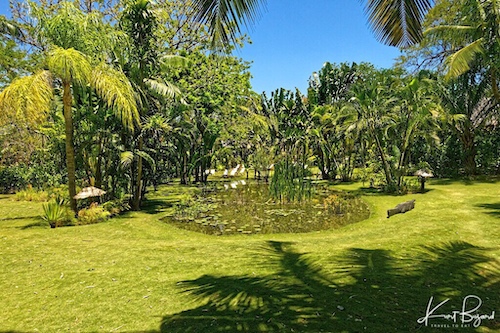
The Oasis at the Anjajavy Lodge is a genuine Garden of Eden. It is a perfect place to relax or unwind after a busy day enjoying some of the various activities on offer at Anjajavy le lodge. Kept at a constant humidity by water sprays, the Oasis offers a refreshing environment in which to escape the heat of the day. A variety of aquatic plants, papyrus reeds, tree ferns, climbing plants and palm trees are home to humming birds, lemurs, malachite kingfishers and many other species. This is also the setting for afternoon tea with refreshing soft drinks, teas and cakes. Designed by Camille Muller, the French landscape designer, the Oasis is the result of the search for harmony within the diversity of experiences on offer in Madagascar. If you look carefully, there are a variety of rare native plants in the garden.
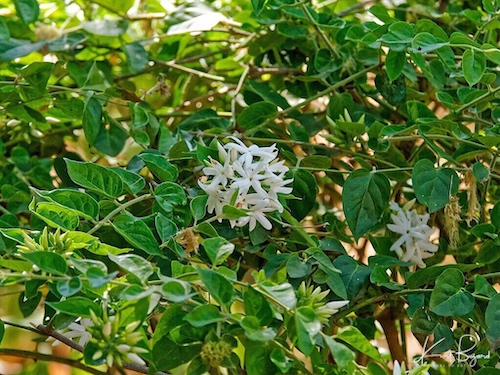
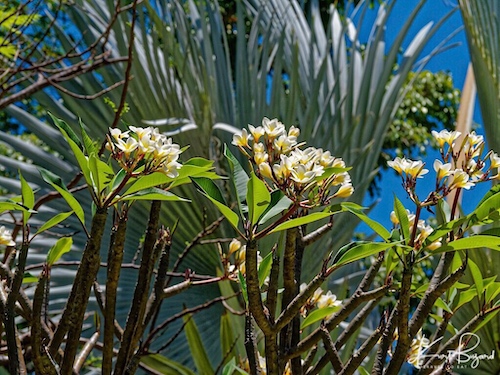
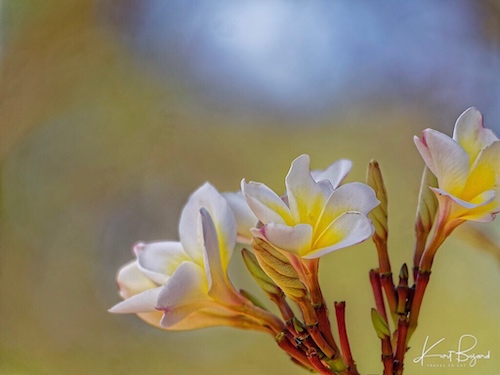
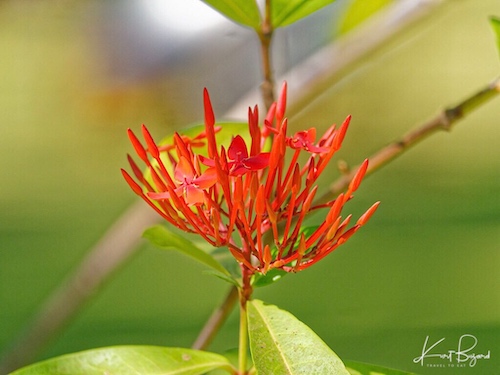
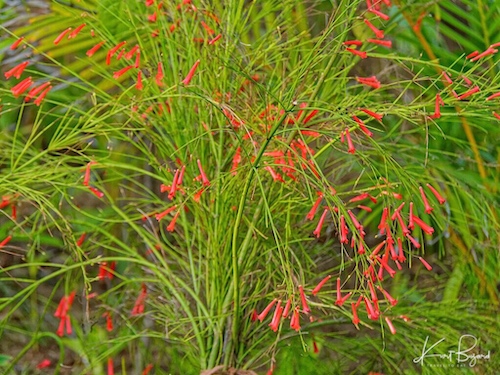
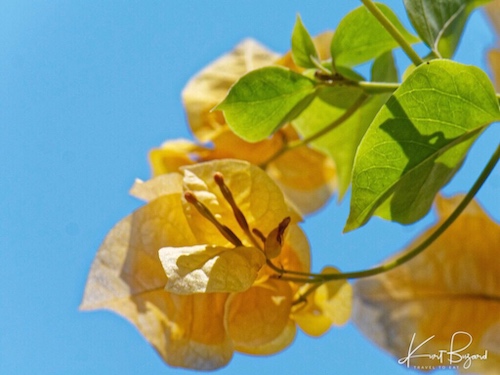
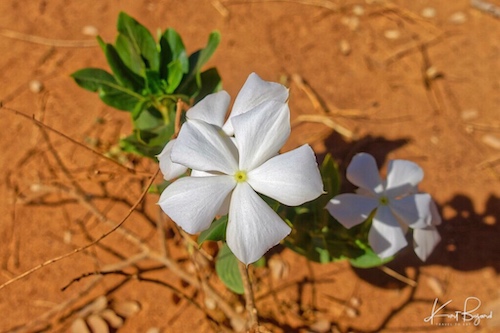
Most of my western readers will recognize most if not all of the flowers. The jasmine and periwinkles are native Malagasy plants. Plumeria is all over Africa and in most tropical venues. Scarlet Jungleflame is native to southern India (widely cultivated in Florida) and Fountainbush is native to Mexico and Guatemala. Both are widely known in the United States. Bougainvillea is native to Peru and seen in almost all tropical locations.
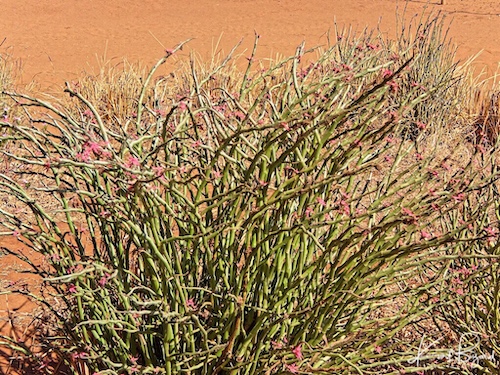
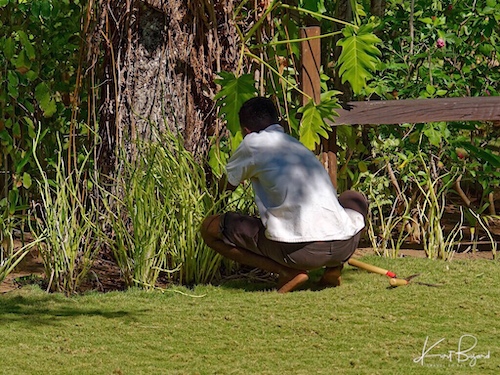
I thought Pedilanthus was a relatively rare plant but in Anjajavy they use it as a border plant. Lady Slippers (Pedilanthus macrocarpus) from Mexico and South America seems to be a popular low water choice in Madagascar.
Papyrus and Water Plants
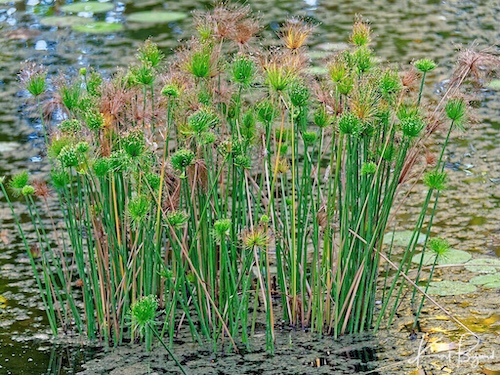
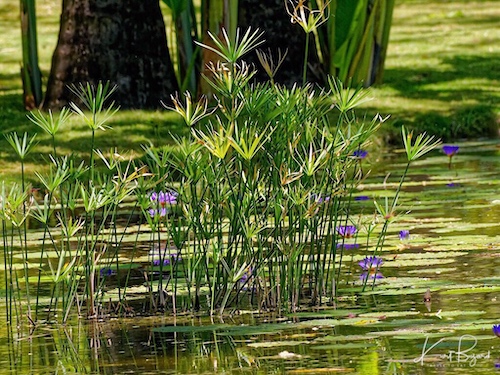
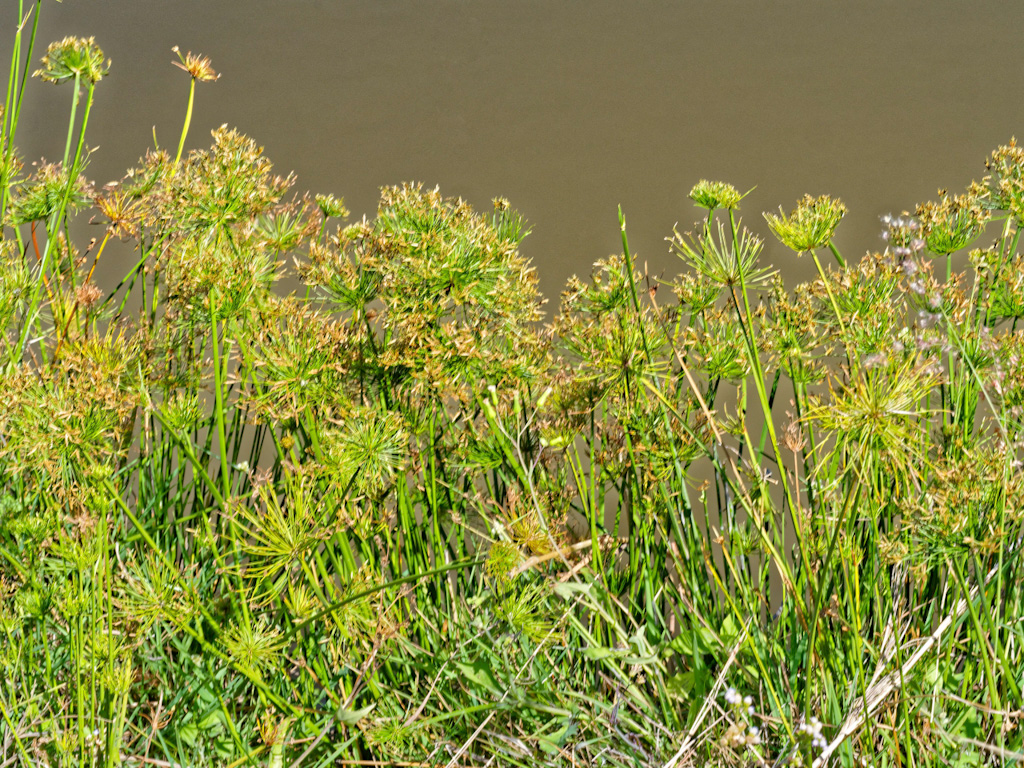
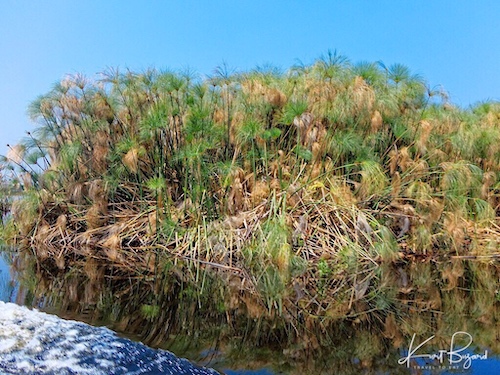
I have arbitrarily assigned names for the papyrus in the Oasis and elsewhere based on appearance alone, there are hundreds of other choices. Madagascar has 321 species of Cyperaceae in 33 genera, representing all major clades of the family. The predominantly tropical Cypereae clade composes about half of the sedge flora, of which Cyperus represents about a third of the species in Madagascar. The Cariceae, a predominantly northern hemisphere temperate clade, is unusually highly represented and composes 10% of the sedge flora, occurring mostly in the highlands. In Madagascar, 55 species (17% of flora, mainly Carex and Cyperus) occur in forests and all are C3 perennials. I have included photos of Papyrus I saw at the Relais de la Reine and the Nile Papyrus (Cyperus papyrus) which I saw in Botswana for comparison.
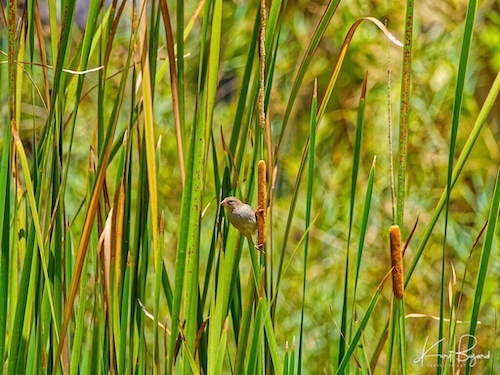
Typha angustifolia L. (lesser bulrush, narrowleaf cattail, or lesser reedmace) is a perennial herbaceous plant of genus Typha. This cattail is an “obligate wetland” species that is commonly found in the northern hemisphere in brackish locations. The plant’s leaves are flat, very narrow (¼”-½” wide), and 3’–6’ tall when mature; 12–16 leaves arise from each vegetative shoot. At maturity, they have distinctive stalks that are about as tall as the leaves; the stalks are topped with brown, fluffy, sausage-shaped flowering heads. The plants have sturdy, rhizomatous roots that can extend 27” and are typically ¾”–1½” in diameter. The variety domingensis is native to Madagascar.
Palms
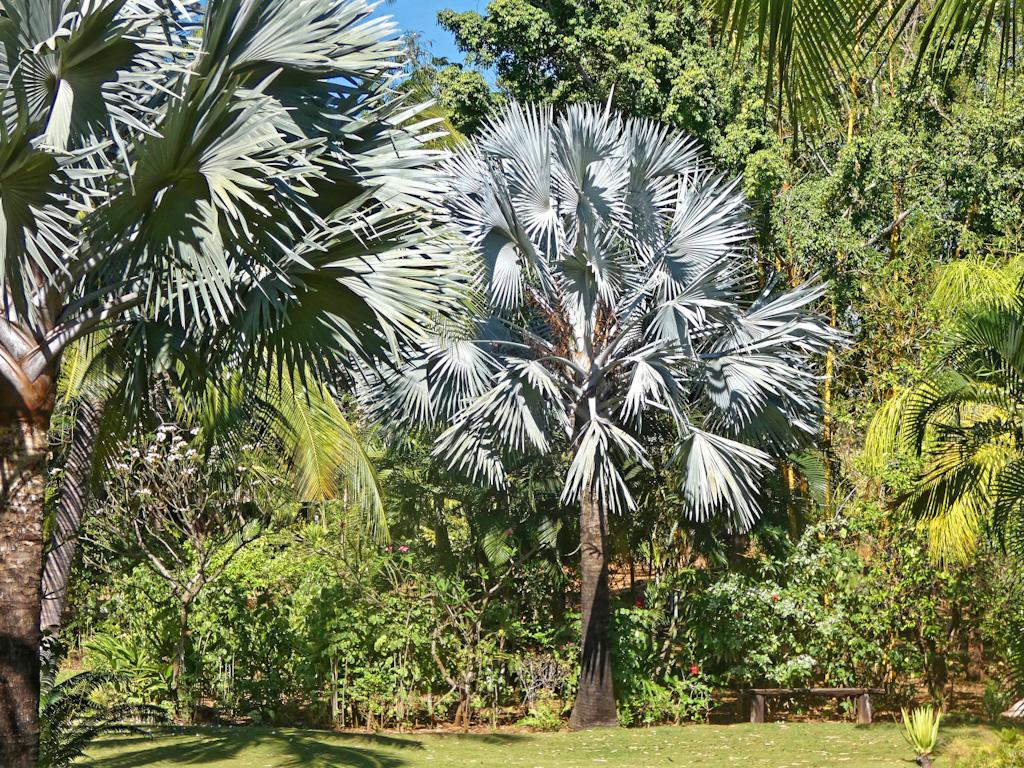
Nothing makes you think of Madagascar more than the majestic, silver Bismark Palm (Bismarkia nobilis). Found only in Madagascar, Bismarckia is one genus among a diverse palm flora (some 170 palms of which 165 are solely in Madagascar). They grow in the plains of the central highlands, nearly reaching the western and northern coasts, in savannas of low grass, usually in lateritic soil (a soil and rock type rich in iron and aluminium). As much of this land has been cleared with fire for agricultural use, Bismarckias, along with other fire-resistant trees like Ravenala madagascariensis and Uapaca bojeri, are the most conspicuous components of this arid region.
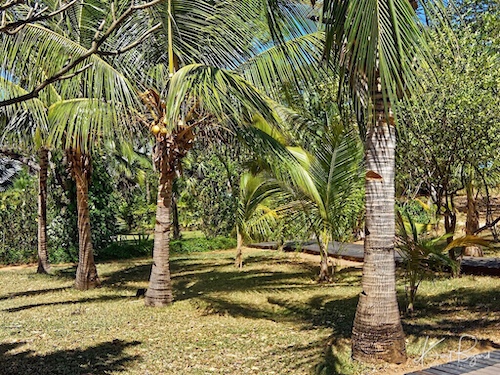
Beccariophoenix alfredii, also known as the High Plateau Coconut Palm, is a recently discovered (May 2004) species of Arecaceae (palms), endemic to Madagascar. It is in the genus Beccariophoenix, and is closely related to the genus Cocos. Beccariophoenix alfredii is very similar in appearance to the coconut palm, although somewhat cold hardy, making it a good look-alike for the coconut in cooler climates. This species is noted for having oblate (flattened spheroid) rather than ovoid fruit like a coconut. The seeds of Beccariophoenix alfredii are an important food source for lemurs, notably the Black lemur, as the seeds ripen between the months of March and June, a time of relative scarcity of food in the area. Lemurs therefore play an important role in the seed dispersal in Madagascar.
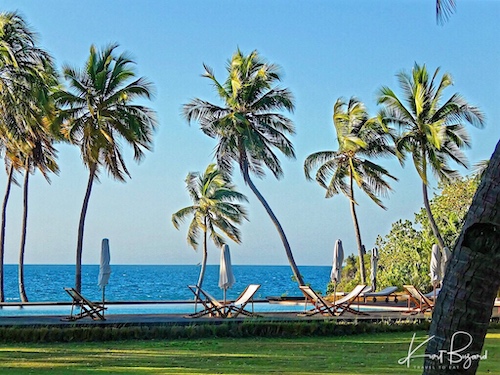
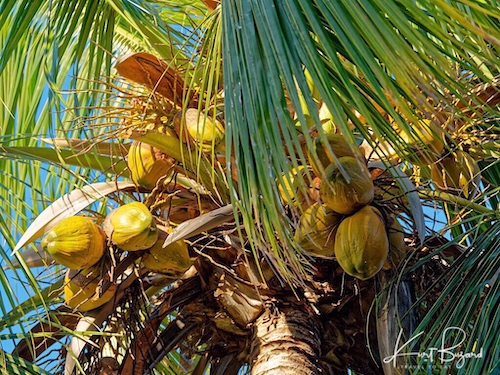
Since coconut palms have been crossed, cultivated and transported for thousands of years, retracing the coconut’s path through archaeological sources alone is difficult. The coconut’s collective history has been preserved far better inside its DNA. By mapping the relatedness of coconut palms around the globe, it is possible to reconstruct the tale of their expansion. Kenneth Olsen and colleagues published a thorough analysis of coconut DNA in PLoS ONE from 1322 coconut palms around the world. The team discovered that despite the coconut’s complicated history, the underlying genetic structure of coconut populations is simple. Most coconuts belonged to one of two genetically distinct groups. One population traces back its ancestry to palms on the coasts of India, the other group descended from palms in Southeast Asia. Even palms that now grow on the other side of the world are still members of one of these two groups. Palms in Middle America are mostly of the Pacific variety, whereas Caribbean palms belong to the Indian group, for example. Madagascar is one of the few places where these two types intermingled producing unique hybrids.
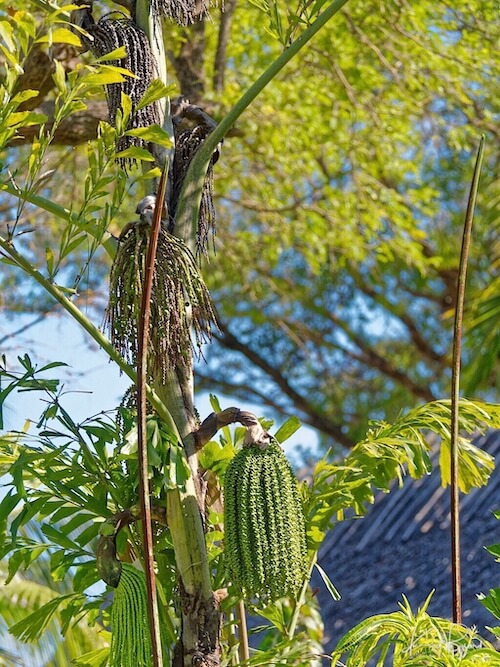
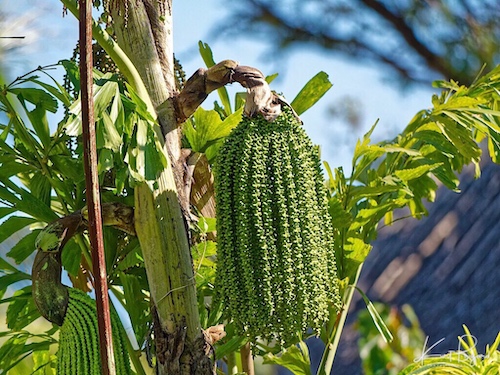
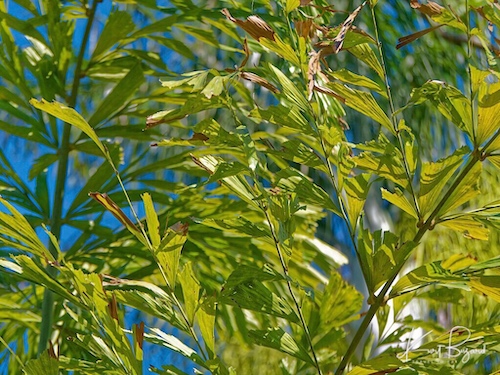
Fishtail palm tree gets its common name from the ragged-edged, ribbed texture of the dark-green leaflets that grow on upright stems. Its triangular leaflets are unique, and over time naturally split at the ends, just like a fish tail. Caryota mitis, the clustering fishtail palm, is a species of palm native to southeast Asia from India to Java to southern China, now sparingly naturalized in southern Florida and in parts of Africa and Latin America. The species was originally described from Vietnam in 1790. The plant is harvested from the wild for local use as a source of food and materials. Another characteristic of Caryota palms is they have toxic fruits. Most palms around the world are completely non-toxic, but a few have oxylates in the fruits making them a health hazard to pets and children if grown in one’s yard. These oxylates are not only toxic to ingest (not highly toxic, mostly incredibly irritating), but toxic to even touch, making cleaning up their mess after fruiting a trickier business. Larger species produce massive quantities of fruit as well, which can create a huge, gooey mess below the palm during the last year of two of its life.
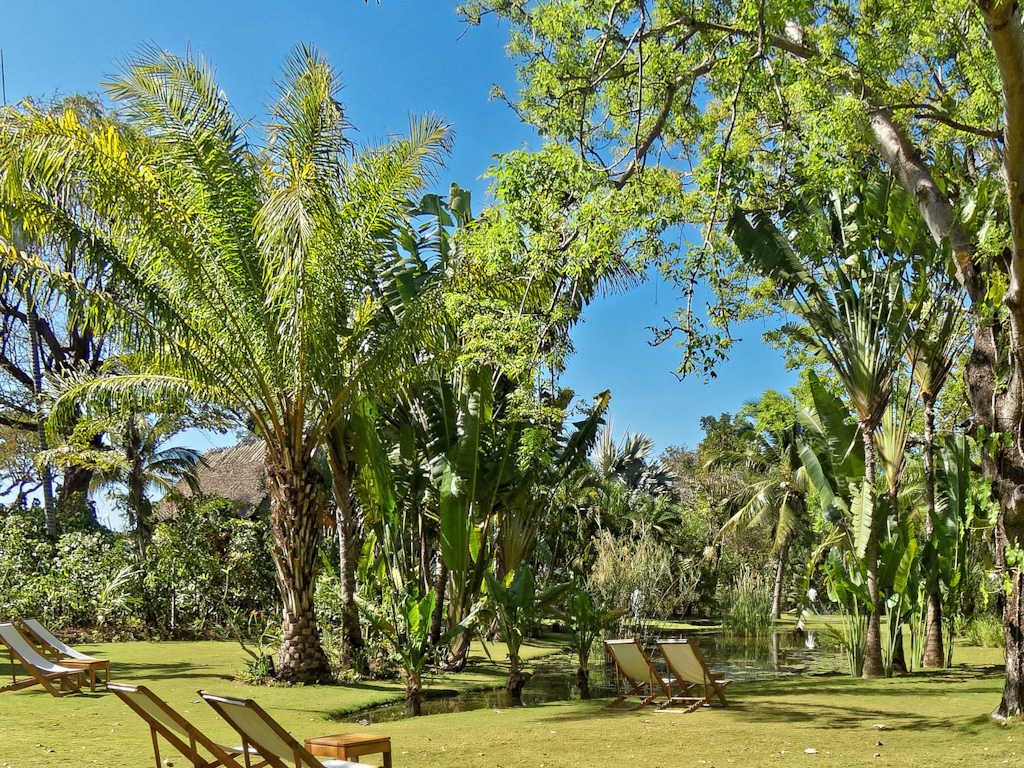
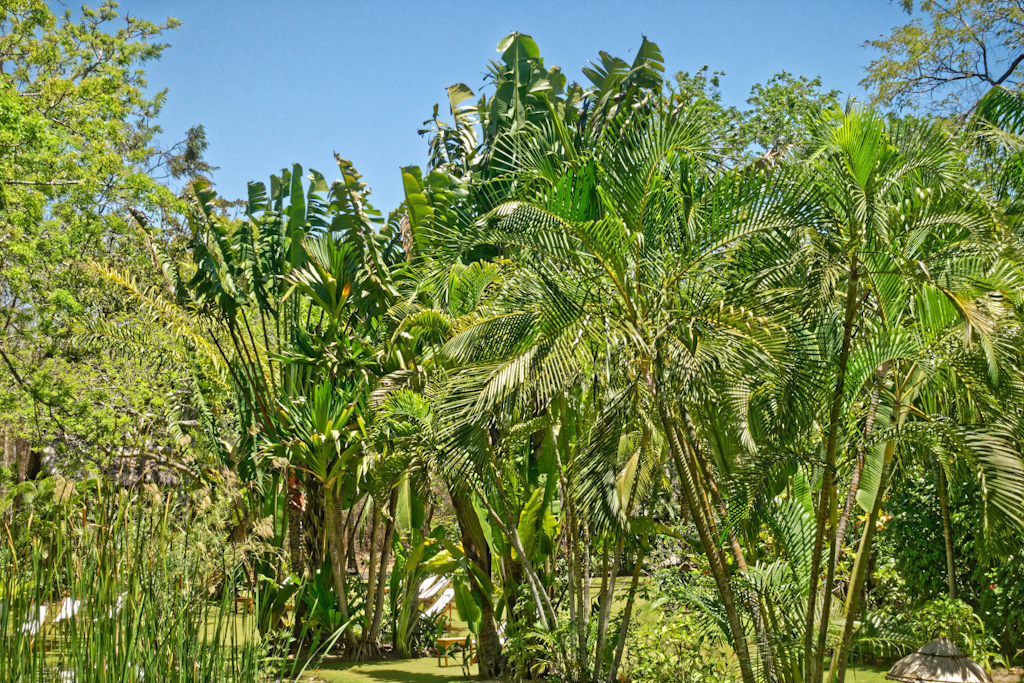
The top photo shows the Triangle Palm (Dypsis decaryi) on the left, identified by the triangle shaped trunk, Elephant Ears (Alocasia macrorrhizos) in the water and Travelers Palm (Ravenala madagascariensis) to the right, all indigenous to Madagascar. The bottom photo shows another view of the Travelers Palm (Ravenala madagascariensis), a native of Madagascar. I have written quite a lot on these in the Vakona Lodge post, so I will not repeat here.
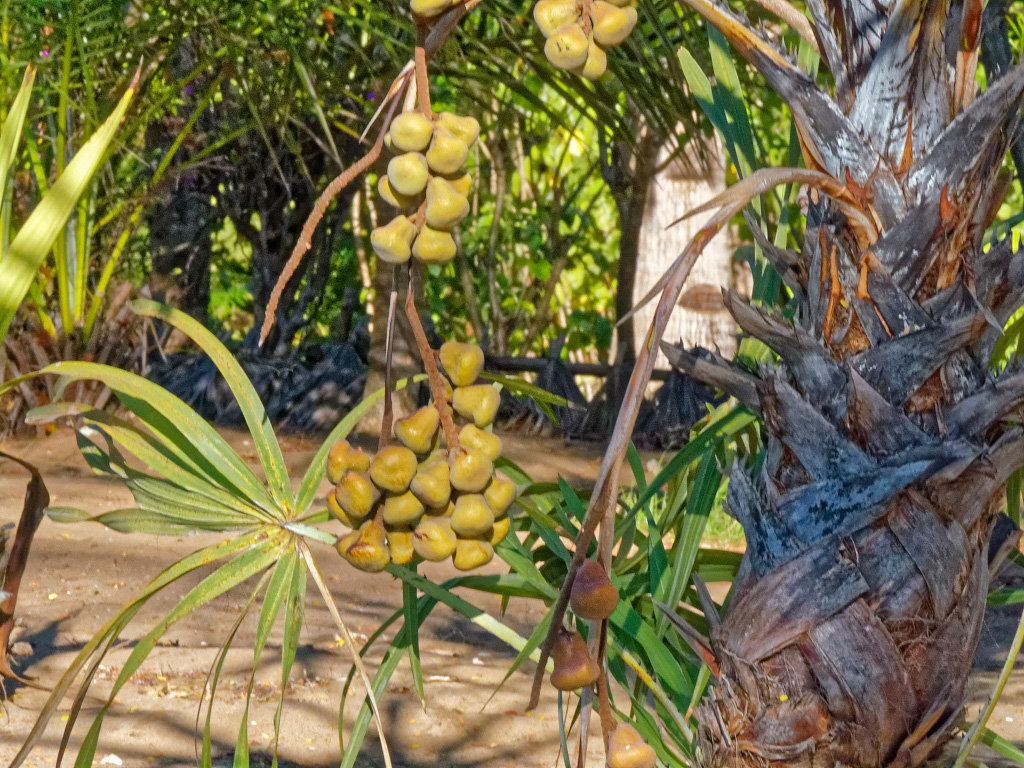
Borassus madagascariensis is endemic to Madagascar, where it is found in the dry western part of the island. Populations in Mahajanga Province are all in close proximity to human settlements. It is common in several towns in the northwest of Madagascar, where it grows in gardens, streets and on waste ground. The conservation status of Borassus madagascariensis is rated as ‘vulnerable’ on the IUCN red list of threatened plants. Although known from several sites, the original habitat over the entire distribution area has been almost totally destroyed. The palm heart and newly germinated seedlings are edible, and an alcoholic drink is produced from the fruit. The fruit has a characteristic pear shape as seen above. Borassus madagascariensis is an attractive palm, but with no special qualities compared to the more common Borassus aethiopum.
Pachypodium with Seed Pods
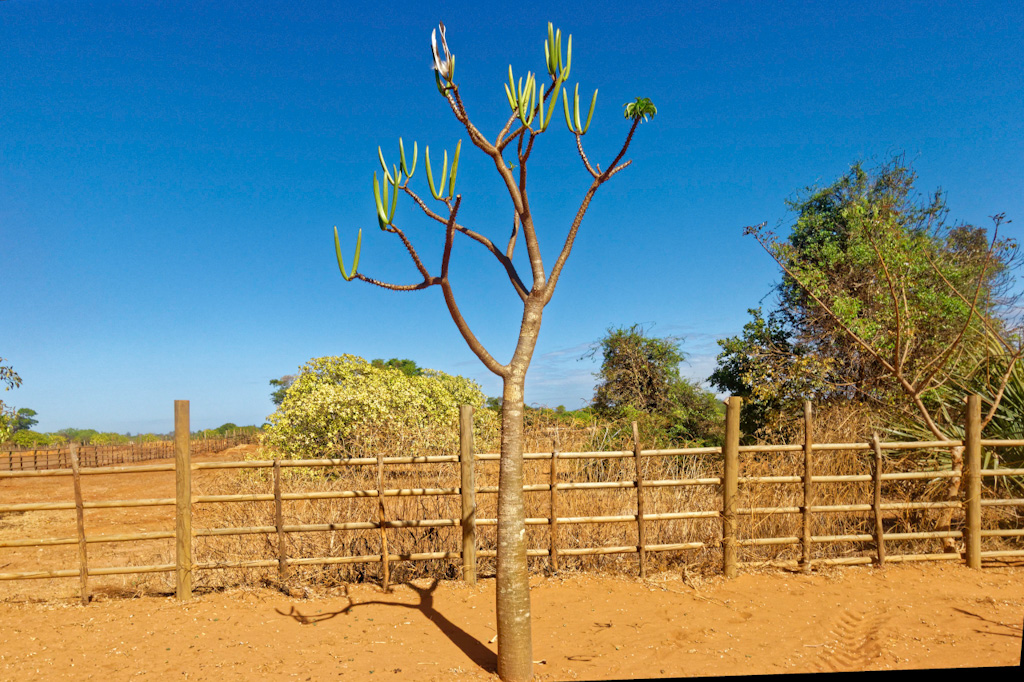
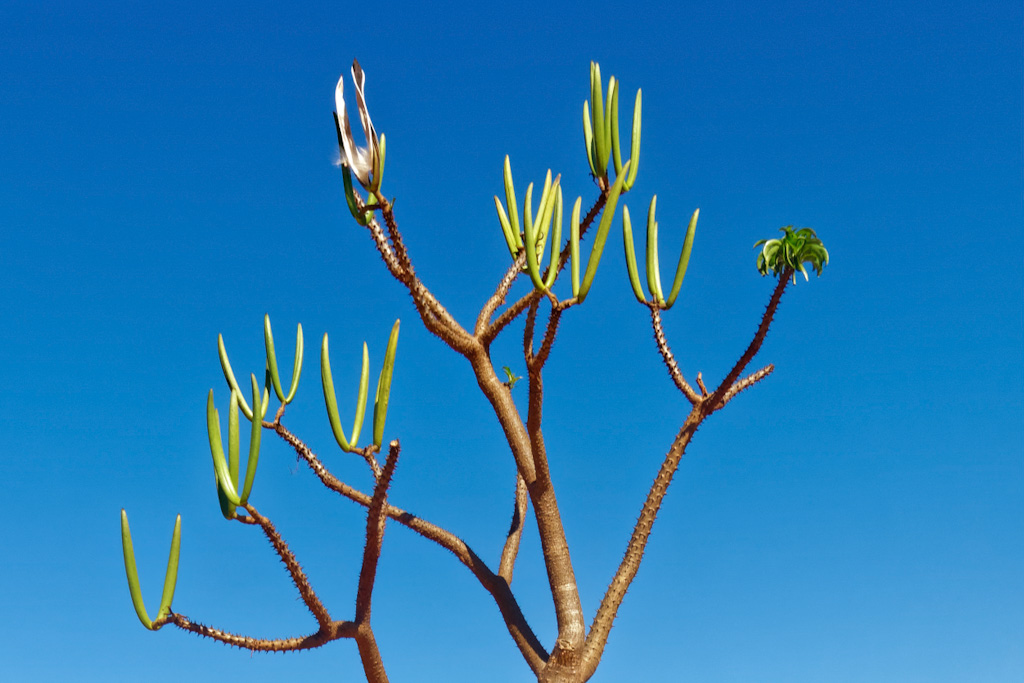
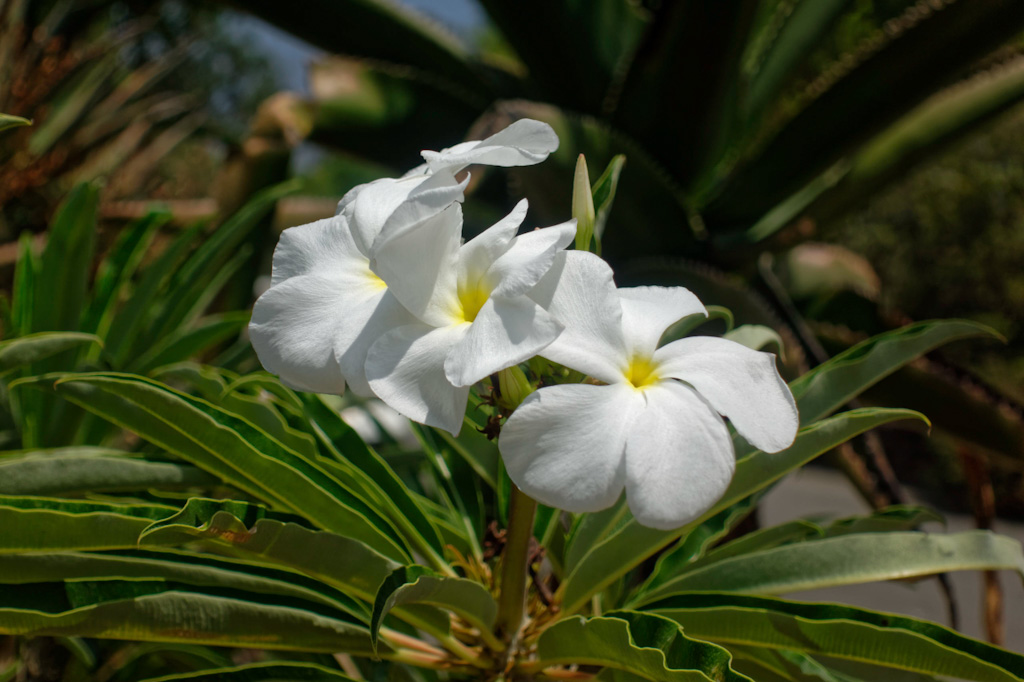
Pachypodium lamerii often develops a single-stemmed trunk, some individuals may develop branching trunks. The leaves form only at the top of the trunk, like a Palm Tree. Its flowers are pure white with a deep yellow center and look very like the Plumeria rubra. Pachypodiums are related to Frangipanis, both plants belong to the Apocynaceae family. Only mature plants bloom, it is in late Spring to early Summer. The flowers are 2–3 inches in diameter. Prior to it’s first bloom of the Spring, this Pachypodium produces amazing seed pods that look like cucumbers. Left alone, they eventually open along the seam revealing great numbers of white-winged seeds.
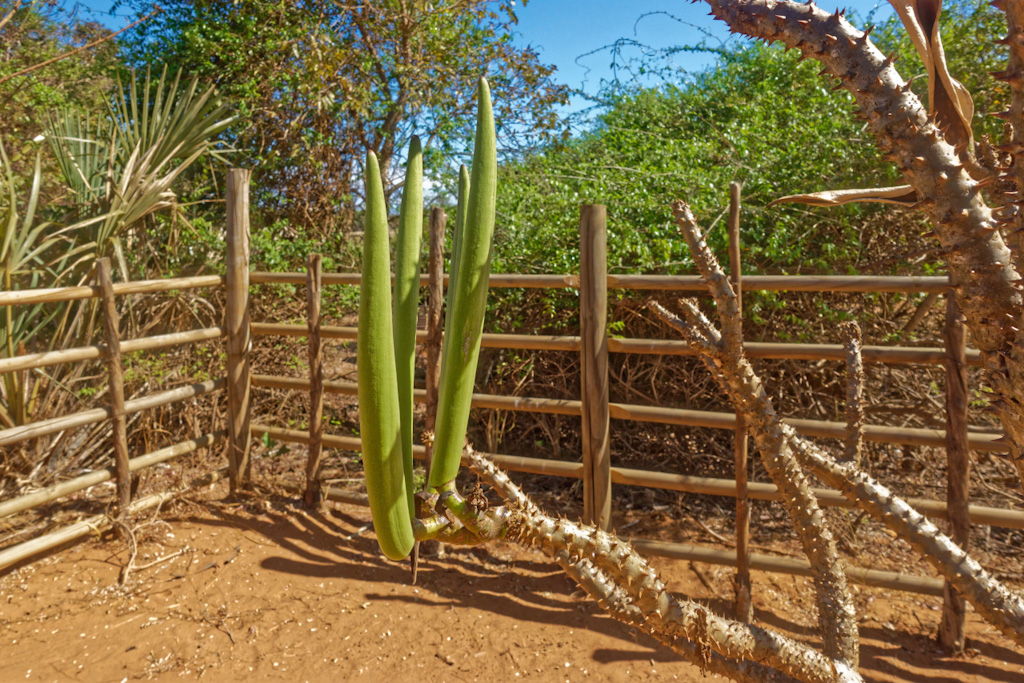
In the same little fenced in area at the Anjajavy Airport, they also had the above Pachypodium-like plant with truly gigantic seed pods, at least 4–5 feet long. This is either a very rare variant of Pachypodium or an entirely different plant. For example, Adenium obesum is a species of flowering plant also in the dogbane family, Apocynaceae, that is native to the Sahel regions, south of the Sahara (from Mauritania and Senegal to Sudan), and tropical and subtropical eastern and southern Africa and Arabia with fairly large seed pods. Plumeria rubra gets seed pods about the size of Pachypodium lamerei. I cannot identify the plant but this is the largest seed pod I have ever seen.
If you visit the Anjajavy Lodge, take a little time to browse the gardens, there are some pretty rare plants in the collection. I hope you enjoyed the post, please leave a comment.
References:
Borassus madagascariensis Fruit
https://www.iucn.org/content/madagascar%E2%80%99s-palms-near-extinction
